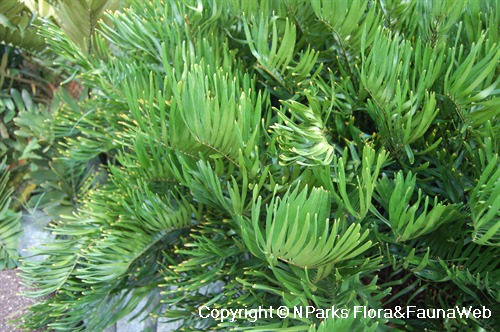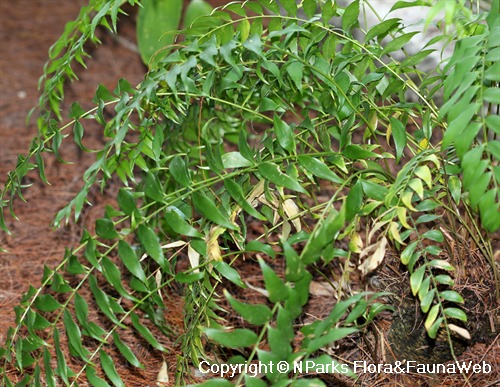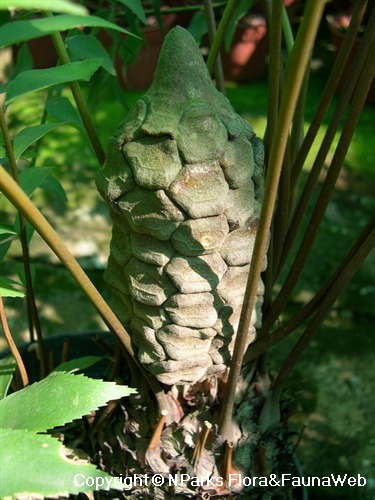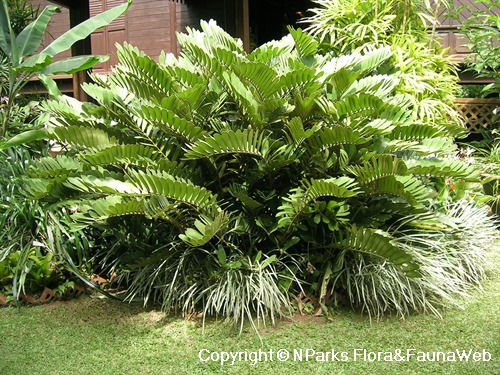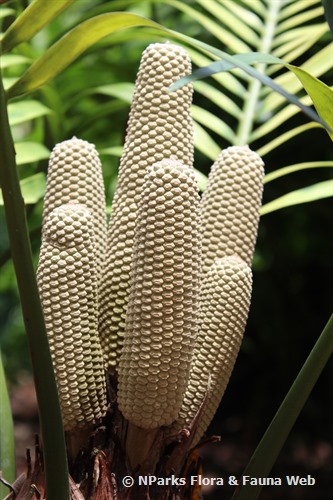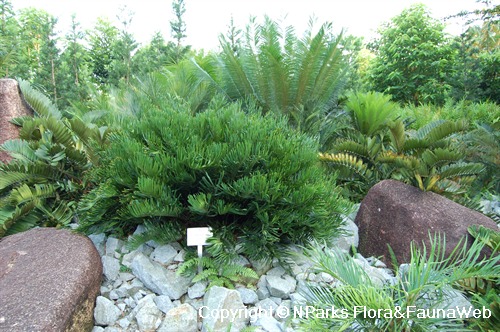
Back
Zamia pumila
| Family Name: | Zamiaceae |
| Synonyms: | Zamia integrifolia, Zamia angustifolia, Zamia floridana, Zamia media |
| Common Name: | Sago Cycad, Coontie, Comptie, Florida Arrowroot, Guayiga, Seminole Bread |
Name
Classifications and Characteristics
| Plant Division | Gymnosperms (Non-Flowering Seed Plants) |
|---|---|
| Plant Growth Form | Cycad |
Biogeography
| Native Distribution | Central Cuba, Southern Puerto Rico and Dominican Republic |
|---|---|
| Native Habitat | Terrestrial |
| Local Conservation Status | Non-native |
Description and Ethnobotany
| Growth Form | It is a small cycad with underground stems and many branches. |
|---|---|
| Foliage | Each plant crown has about 4 – 12 mature leaves. Leaves are borne on a smooth petiole (20 – 80 cm long), with stipules at the base. Mature leaf is stiff, erect (can reach up to 1.5 m long) and has a feathery-like appearance, with 10 – 60 leaflets (10 – 25 cm long and 0.5 – 2 cm wide) lined with toothed margin. Cataphylls is present and about 1 – 2 cm long. |
| Reproductive Parts - non-flowering plant | Male cones are cylindrical to ovoid-cylindrical, red to dark reddish brown, hairy and occurs in clusters of 1 – 30 per stem. Female cones are similar to the male cones but has a conical acuminate tip and occurs in clusters of 1 – 5 per stem. Seed is oval shaped (1.5 – 2 cm long and 1 – 1.5 cm wide) with orange-red seed coat. |
| Habitat | It is found in grassland, open shrubby forest and coastal dunes |
| Etymology | Zamia, greek for azaniae, which means ‘pine-cone-like’, referring to the reproductive structures. Specific epithet pumila, in latin, means small or dwarf. |
| Ethnobotanical Uses | Others: In 1763, this species was the first cycad to be described for the family Zamiaceae, which is the largest family of cycads. |
Plant Care and Propagation
| Light Preference | Full Sun |
|---|---|
| Water Preference | Little Water |
| Plant Growth Rate | Slow |
Foliar
| Mature Foliage Colour(s) | Green |
|---|
References
| References | Jones, D.L. 2002. Cycads of the World. Ancient Plants in Today's Landscape. 2nd Edition. United States of America: Smithsonian Institution Press. 456 |
|---|
Image Repository
Others
| Master ID | 1291 |
|---|---|
| Species ID | 2584 |
| Flora Disclaimer | The information in this website has been compiled from reliable sources, such as reference works on medicinal plants. It is not a substitute for medical advice or treatment and NParks does not purport to provide any medical advice. Readers should always consult his/her physician before using or consuming a plant for medicinal purposes. |

